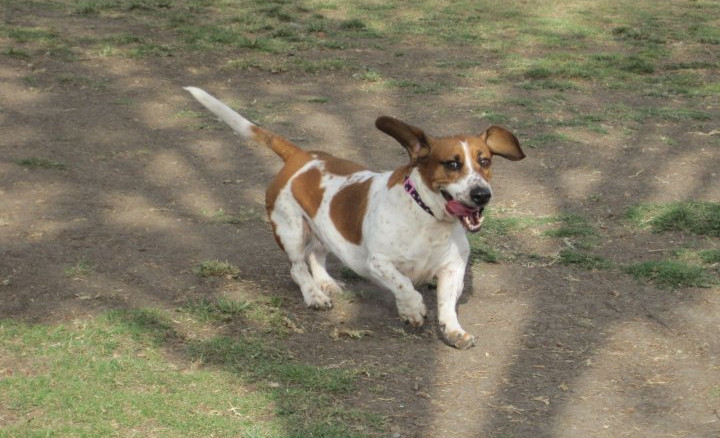
Vitamin D – Why did the AAFCO Safe Upper Limit for Dogs Decrease in 2016?
As with all essential nutrients, a safe concentration range of vitamin D in the diet for dogs, cats, and livestock is defined by the Association of American Feed Control Officials (AAFCO). Updates to the AAFCO Dog or Cat Food Nutrient Profiles have a significant impact on the industry with primarily formulation and packaging updates to ensure compliance with new nutrient minimums and maximums. Reducing existing nutrient maximums or introducing maximums to formerly unrestricted nutrients can be particularly demanding for pet food companies. Updates to the AAFCO Nutrient Profiles require a better understanding of nutrient variability in raw materials, best practices around ingredients with high nutrient concentrations like vitamin premixes, and continued screening of finished products for pet food manufacturers to produce foods with optimal nutrition.
A generic term for related secosteroids, the members of the vitamin D family important to dog and cat nutrition are ergocalciferol (vitamin D2), which is from fungal, yeast, and plant sources and cholecalciferol (vitamin D3), which is from animal sources.1 Cholecalciferol is far more digestible than ergocalciferol and consequently, it is the more commonly used form of vitamin D. While dogs can utilize both D2 and D3, cats discriminate against ergocalciferol, using it at a less efficient rate; therefore, vitamin D3 has a greater effect on hypervitaminosis in cats and could be a reason for a vitamin D safe upper limit higher in cats compared to dogs.2
Vitamin D is essential for its role in calcium and phosphorus homeostasis, which supports physiological processes like muscle contraction, blood clotting, and nerve conduction.1 As with all essential nutrients, there can be too much of a good thing. Signs of vitamin D toxicity can include vomiting, diarrhea, decreased appetite, pain in the abdomen, and increased drinking and urinating at lower doses. Higher doses can affect calcium and phosphorus turnover in soft tissue and bone, which can result in bone issues, mineralization of organs, kidney failure, and death.1,3
In 2016, AAFCO reduced the vitamin D safe upper limit (SUL) for dogs from 5000 IU/kg dry matter (DM) to 3000 IU/kg DM (750 IU/1000 ME kcal).3 This decision was largely based on the results of two studies.5,6 In these studies, Great Dane puppies consuming 4000 IU/kg DM vitamin D in the diet experienced disrupted endochondral ossification, which is how cartilage is replaced with bone during growth and development.4,5,6 Great Danes are a giant breed,7 making them especially sensitive to calcium and phosphorus metabolism and homeostasis as puppies.1 Many dog foods are formulated to provide a complete and balanced ration to the population rather than the individual and basing the vitamin D SUL on results from a highly sensitive subgroup helps ensure that foods on the market are safe and have optimal nutrition for the entire canine population. As progress is made in developing noninvasive research methods to use in dog nutrition studies, further differences between various subgroups of domesticated canids may become apparent. For calcium, AAFCO does differentiate between the growth of large-sized dogs (dogs exceeding 70 pounds as adults) and all other size dogs, likely because of the incredibly narrow acceptable range for calcium in formulas that support the growth of large breed dogs. Ideally, the vitamin D SUL would be like calcium in that there would be separate restrictions for large size puppies compared to adults if it was supported by further research.
Global advancements in technology and research methods in combination with emerging nutritional truths may usher in future updates to the AAFCO Dog and Cat Nutrient Profiles. As these updates roll out, pet food formulation changes will always follow. The decrease in the SUL for vitamin D back in 2016 lowered the number of high-fat fish, like salmon, that could safely be used in pet food recipes and highlighted the need for careful screening of high fish diets and vitamin premixes. Pet food has been and will forever be a dynamic landscape of exciting new developments and hurdles to overcome.
References
- National Research Council. Nutrient Requirements of Dogs and Cats. Washington, DC: National Academy Press, 2006.
- Crossley, VJ, Bovens, CPV, Pineda, C, Hibbert, A, Finch, NC. Vitamin D toxicity of dietary origin in cats fed a natural complementary kitten food. JFMS Open Rep. 2017;3(2):2055116917743613.
- Schmid, R, Brutlag, A, Gollakner, R. Vitamin D Poisoning in Dogs. https://vcahospitals.com/know-your-pet/vitamin-d-poisoning-in-dogs
- 2016. Midyear Meeting Committee Report. https://www.aafco.org/Portals/0/SiteContent/Meetings/Midyear/2016/2016_Midyear_Committee_Reports_w_cover.pdf
- Tryfonidou, MA. Involvement of vitamin D3 metabolism in calcium homeostasis and skeletal development in growing dogs. Thesis, Faculty of Veterinary Medicine, Utrecht University, 2002.
- Tryfonidou, MA, Stevenhagen, JJ, van den Bend, GJCM, Oosterlaken-Dijksterhuis, MA, DeLuca, HF, Mol, JA, van den Brom, WE, van Leeuwen, JPTM, Hazewinkel, HAW. Moderate cholecalciferol supplementation depresses intestinal calcium absorption in growing dogs. J Nutr. 2002;132:2644- 2650.
- Lowery, S., 2021. 16 Largest Dog Breeds. https://www.akc.org/expert-advice/dog-breeds/16-largest-dog-breeds/
Follow us on LinkedIn for the latest updates on all things happening here at BSM Partners.
About the Author
Corrine Harris Trevino formerly served as a Manager of Technical Services in the Product Innovation Group at BSM Partners. Outside of work, she can generally be found walking, training, and playing with her dogs or wrangling her flock of sheep after a daring escape. Corrine also declares a bias for the Cardigan Welsh Corgi, which she believes to be the superior of the two Corgi breeds.
This content is the property of BSM Partners. Reproduction or retransmission or repurposing of any portion of this content is expressly prohibited without the approval of BSM Partners and is governed by the terms and conditions explained here.